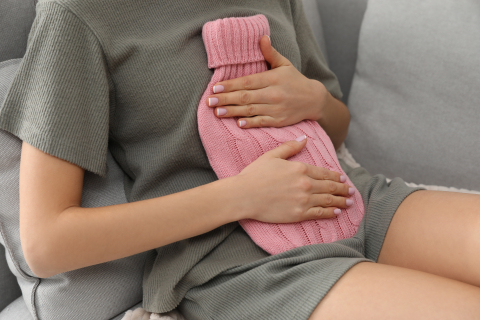Problems in the bladder most definitely don’t go unnoticed. You are constantly aware of it, the need to urinate even though your bladder is hardly full, pinching and sometimes squeezing, and often painful when urinating. However, this becomes a real burden when the urinary tract infections reccur. While men rarely get them, some women suffer more than six times a year with UTIs. One in four can also expect to suffer another painful infection within six months.
Doctors have not been able to offer these women an effective solution until now, because the reason why some patients are so frequently affected is unknown. Now researchers at Washington University in St. Louis are closer to an explanation (Plos Pathogens, online). Experiments with mice showed that two types of bacteria apparently cause the inflammation to flare up again.
 The main cause of urinary tract infections are Escherichia coli bacteria, which are carried from the intestine into the urinary tract. After infection, some of the microbes can lodge in the bladder wall and survive in this hiding place – inaccessible to antibiotics and the weapons of the immune system. If the vaginal bacteria Gardnerella vaginalis also enters the bladder, the doctors explain, it can activate the dormant coli bacteria.
The main cause of urinary tract infections are Escherichia coli bacteria, which are carried from the intestine into the urinary tract. After infection, some of the microbes can lodge in the bladder wall and survive in this hiding place – inaccessible to antibiotics and the weapons of the immune system. If the vaginal bacteria Gardnerella vaginalis also enters the bladder, the doctors explain, it can activate the dormant coli bacteria.
Find out more about urinary tract infections
Women are much more likely to have urinary tract infections than men
Gardnerella is merely a door opener in this scenario. The bacterium does not settle permanently in the urinary tract and does not cause any symptoms. However, even just its presence is apparently enough to damage cells in the bladder wall and release coli bacteria, which can then trigger renewed inflammation.
Researchers came to these findings when they first infected mice with coli bacteria and four weeks later with Gardnerella germs. More than half of them then showed signs of a new bladder infection. Two control groups that were given either a different vaginal bacteria or sterile saline after infection with coli bacteria were five times less likely to show signs of inflammation.
Find out more about pathogenic bacteria
It has not yet been proven that the infection takes place in the same way in humans. However, the fact that doctors find more Gardnerella bacteria in patients with frequent urinary tract infections suggests that this is the case. If the infection mechanism is confirmed in humans, new methods of treatment are “very conceivable”, says André Gessner, Director of the Institute for Microbiology and Hygiene at the University Hospital Regensburg. More than half of all women suffer from cystitis at least once in their lives. They are affected so much more often than men because coli bacteria have to travel a much shorter distance from the intestine to the bladder.
What is also interesting about the work of the US doctors is the fundamental finding that infections can be triggered by other pathogens that no longer have to be present at the time of the outbreak of the disease and are therefore easily overlooked. It is believed that it is possible that this mechanism could also play a role in other infectious diseases.
Source (in German only): http://www.sueddeutsche.de/wissen/medizin-immer-wieder-schmerzen-1.3444973





























